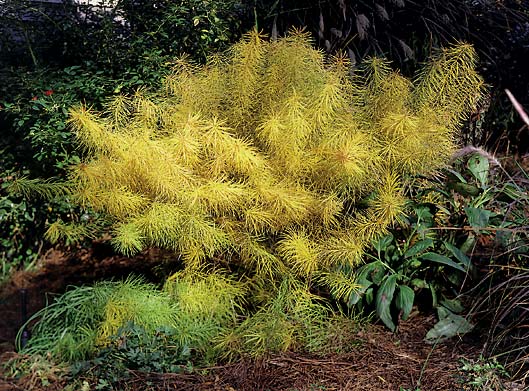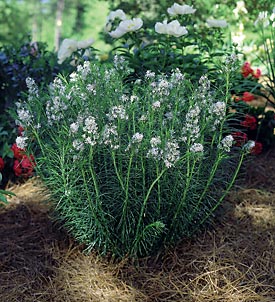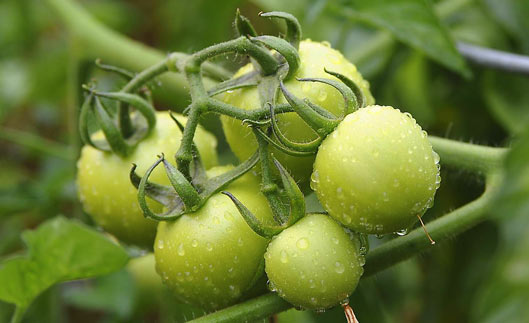by Jean and Roxanne Riggs
When you have collected pine cones from the woods, shells from the beaches, bits and pieces of special and unique flora, or other natural materials from the outdoors, there is a wonderful way to display your treasures. We will show you how to make a beautiful potpourri that looks like and is lightly fragrant of the piney woods, shores, and footpaths—sure to bring back memories of summer.
Basic potpourri recipe
A basic recipe includes 1 quart of dried materials, 3 to 5 tablespoons of fixative, and 10 to 15 drops of fragrant or essential oil. Place everything in a glass jar with a lid and allow it to mellow for 3 or 4 weeks, while shaking or stirring it regularly. A potpourri is fragrant because its oils are evaporating, and as such, more oil will need to be added as necessary. More oils and fixatives will also be needed when more materials are added. When treated like this, the fragrance will go on for years, and so will the memories. For storage, keep the mixture in a glass jar with a closed lid. Do not use a metal container, as tin boxes corrode and might alter the fragrances.
A fixative is a material that is used to set or “fix” a fragrance and release it more slowly. The most common fixative in fragrances today is orris root. This dried root of the orris root iris (Iris x germanica var. florentina) is usually available from specialty shops as a powder or in small chunks. It can be grown in the garden and is a lovely pale blue iris, with slightly darker falls, that blooms in late May. If you grow your own, cut or grind it before it dries thoroughly since it becomes very woody and hard after it dries. It has a light violet fragrance. Another good fixative is calamus root, the dried root of Acorus calamus, a plant that grows wild in wetlands alongside the cattails. Other common fixatives include woody things like pine cones, cinnamon sticks, and small nuts and pods. Some of the more exotic items are tree resins like frankincense, myrrh, and benzoin. Musk, civet, and other scents from animal sources are not recommended.
The difference between fragrance oil and essential oil is that fragrance oils are made in a laboratory and essential oils come directly from plant material. We usually recommend essential oils if possible, but sometimes the expense is too great or they are not available, and fragrance oils then make good substitutes.
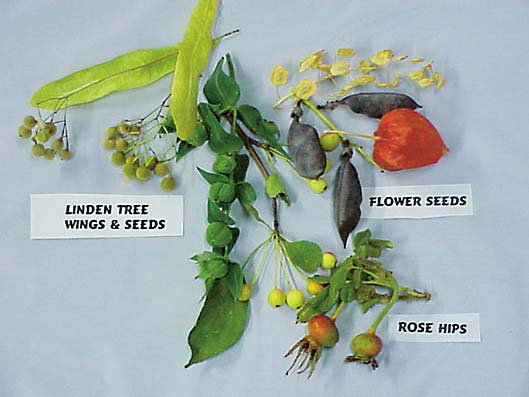
Potpourri materials list
You need to start your potpourri with good-scented dried materials like dry pine needles, dried mosses, and dried flowers and herbs. Add other things that are larger to add interest and more fragrances. We have assembled a list that we use to make our version:
Pine needles and pine cones. While the white pine is the state tree of Michigan, its cones are quite large and might need to be cut up to manageable sizes. The jack pine has pretty, medium-sized cones, and the needles are very fragrant. Smaller pine cones are easier to work into the recipe. The woody cones make good fixatives.
Acorns and other nuts. Small nuts are good additions, and also hold a fragrance well. They add lots of visual interest, and signify looking forward to the next growing season.
Sweet gum tree balls. These are the spiny-looking balls that you find under the sweet gum trees on many lawns and in some parks.
Linden or maple tree wings and seeds. The winged seeds make pretty additions to a potpourri. The wings are adaptations to help the tree disperse the seeds using the wind. Children like to toss them into the air and watch them come down spinning like propellers.
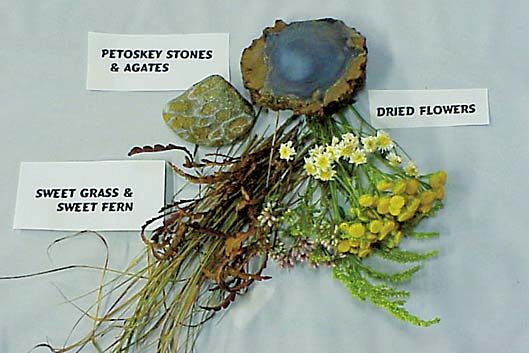
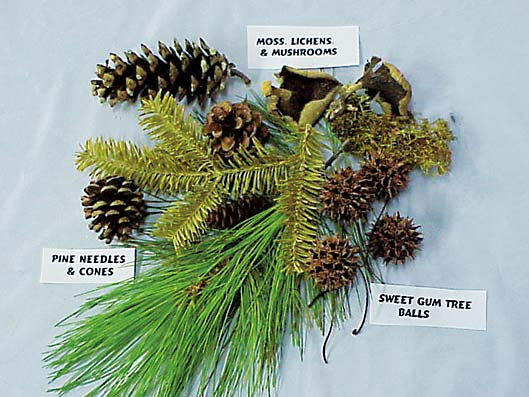
Rose hips and other flower seed pods. The rose hips are dark red, and add a citrus fragrance. Iris pods are brown, woody, and pretty. Bush clover dries tan and is nice. Some ferns have sterile fronds that add a new shape.
Dried mosses, dried lichens and mushrooms. All of these can be added and will add a little fragrance and a lot of interest.
Clam and snail shells, cleaned. At the lake shore, everyone picks up shells and other treasures, including Petoskey stones and little agates. All of these must be cleaned, especially the shells, to make sure you don’t add bad odors. These do not add fragrances, but they certainly are interesting. On these, you could write the date you found them with a permanent pen.
Dried flowers, dried herbs, sweet grass, and sweet fern. There are lots of flowers that grow freely and are not protected wildflowers, and they make good colorful accents. Tansy, white yarrow, goldenrod, roses, black-eyed Susan, Joe Pye weed, boneset, and many others are wonderful additions. Mint adds a nice fragrance and a pretty green color. Sweet grass grows in damp places and adds a wonderful vanilla fragrance. Sweet fern grows amongst the wild blueberries up north, and has a fragrance that is typical of the northern forests. Fragrance is a powerful reminder of many things, and sweet fern reminds us of warm summer days and northern woods better than most anything else.
Feathers and any other special goodies. These things do not add any fragrance, but are great additions for the memories.
Cedar leaves and chips. These add a good fragrance and additionally act as insect repellents.
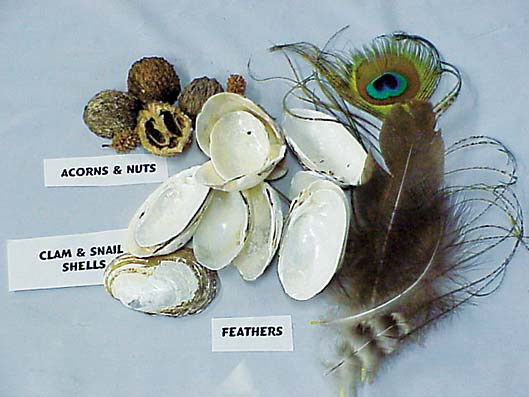
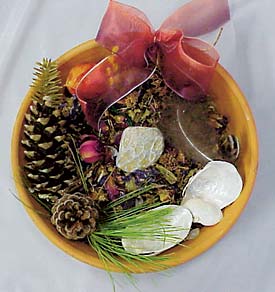 The finished potpourri.
The finished potpourri.
Making the potpourri
For each quart of materials that we use, we add about 15 drops of balsam fir or pine needle essential oil to about 5 tablespoons of orris root, and then add it to the mixture. We find that a few drops of cinnamon oil makes the pine fragrance more mellow, and that a few sticks of cinnamon as well as a few whole cloves can add enough spice to the fragrance to make it more interesting and give it some needed depth. You can make the aroma stronger or weaker depending on your own preferences by adding more or less oil.
Our relatives have a cottage near Lake Huron (one of the five Great Lakes, along northeastern Michigan) that they say smells musty after being closed for a period of time, and they use this potpourri when they lock it up for the season to keep it smelling fresher. You can add more things to it as more items are collected. You can give little gift packages of it to your friends or guests to help them remember their visit, which is made especially meaningful if they add something that they found too.
Jean and Roxanne Riggs operated Sunshine Farm and Garden in Commerce Township, MI.

